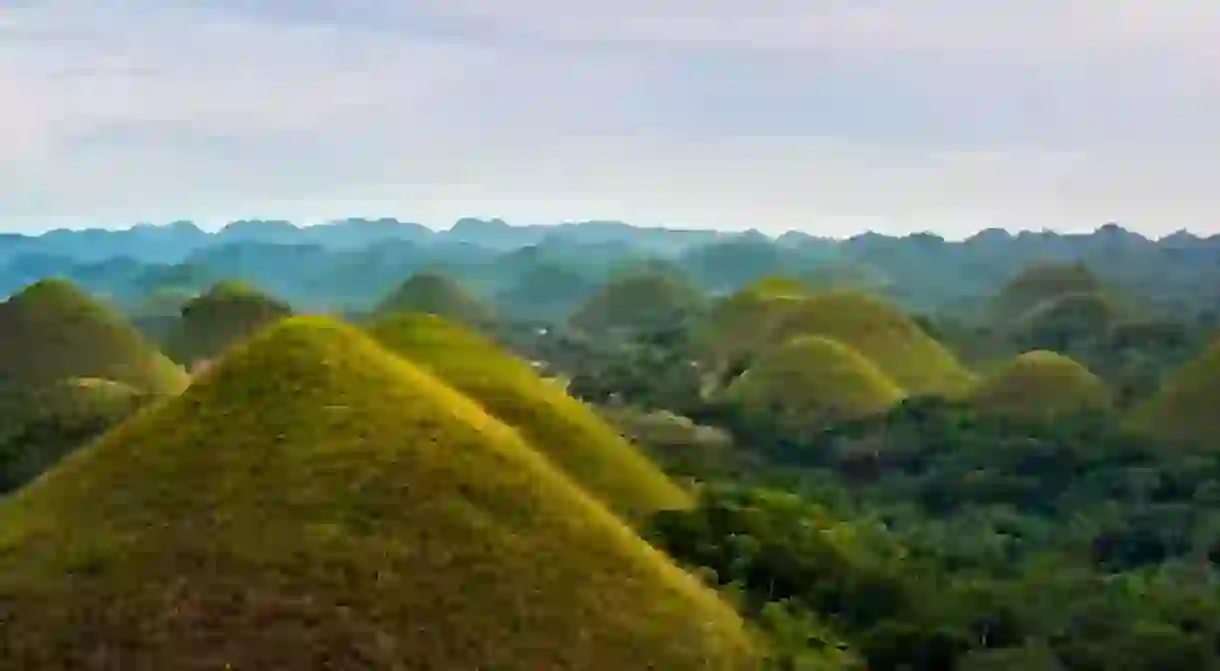Traveller's Guide To Visayas, Philippines

While Visayas seems small compared to its neighboring island groups—namely Luzon and Mindanao—this island group should not be underestimated. One of its small, scattered islands witnessed an important historical event, and the Visayas Region is also home to a number of pristine, white sand beaches.
Brief history and culture
According to historical sources, the word Visayas derives from the term Sri Vijaya, which was an ancient empire that settled in Panay Island during the 9th century AD. Historical accounts mention that the Visayans, residents of the Visayas Region, who we know today, descended from Malay migrants who had to move to Panay due to the declining Sri Vijaya Empire. The name is said to be in remembrance of one of the most powerful influences in Southeast Asia in early times.
The Visayas Region is divided into three non-administrative sub-regions: Central Visayas, Eastern Visayas, and Western Visayas. The region also has seven islands: Cebu, Bohol, Leyte, Masbate, Negros, Panay, and Samar — all of which have hidden gems to offer! From the biggest and most popular cultural/religious events in the country such as Ati-Atihan Festival, to delicious native delicacies like dried mangoes and white sand, unspoiled beaches, Visayas provides a lot of bucket list destinations to local and foreign travelers.
While the inhabitants’ languages may sound similar, and the languages are viewed as one macro language, there are differences among them. Those living in Western Visayas speak in Ilonggo or Hiligaynon, whereas people residing in Central Visayas are fluent in the Cebuano language. Inhabitants of Eastern Visayas speak Waray, while the rest speak other languages such as Aklanon or Capiznon, for instance. You’ll seldom hear residents speak in Tagalog or Filipino, as they only use or learn about the language in school, according to most locals.
Natural features and climate
The Central Visayas Region, which consists of Bohol, Cebu, Negros Oriental, and Siquijor, is mostly characterized by highlands with the exception of Bohol province. In the Eastern part, the islands of Samar, Leyte, and Biliran generally have flat terrains, and mountainous areas are mostly found within Samar and Leyte. As for Western Visayas, home to Panay Island, Guimaras, and Negros Occidental, its topography has wide stretches of coastal lowlands and rivers.
The Philippines generally has only two seasons: dry and wet. If you’re considering going island hopping in the Visayas Region, it’s advisable to go there during the summer months from March to May, as there’s a low chance of precipitation within the area.
Must-see destinations in Visayas
Below, we round up five destinations that should be in every traveler’s bucket list if he or she wants to visit the island group of Visayas:
Bohol

For a nature lover’s perfect getaway, Bohol is the ideal destination in the Visayas Region. Find lush landscapes and the amazing Chocolate Hills (which turn chocolatey brown in color during the summer), experience eating a meal on a river cruise in Loboc, and see the furry, small creatures called the Philippine Tarsiers, which are considered endemic to the country.
Cebu

Known as the province where the oldest city of the Philippines is found, the island of Cebu offers stunning views, land and sea adventures, and the grand festival of Sinulog, celebrated every third week of January each year. Apart from immersing yourself in nature and having the chance to see whale sharks on the island, Cebu also plays an important role in Philippine history; it is where the Battle of Mactan was held and the first successful resistance to Spanish colorization was recorded.
Boracay Island in Aklan

Part of the country’s pride comes from the island group of Visayas’ world-famous Boracay Island, which was hailed as the best island of 2017! Popular to tourists for its white, fine sand beaches and crystal clear waters, this island is the best location for a variety of water sports, adventure activities that seem endless, and late-night island parties. Of course, you shouldn’t skip the food trip, where you can taste freshwater seafood.
Siquijor Island

If you’re in search of pristine beaches and natural wonders that offer unique experiences, then Siquijor Island is the place to be! While it’s infamously known for dark myths (they say you can find voodoo doctors here), this remote island will satisfy your wanderlust, as it provides the perfect place to relax, unwind, and disconnect from the hustle and bustle of the city.
Negros Occidental

Known as the country’s Sugar Capital because it’s mainly responsible for sugar production in the Philippines, the province of Negros Occidental offers a lot of nature spots for adventure seekers and honeymooners. These include the beaches of Sipalay, the Ruins in Bacolod, and popular waterfalls such as the romantic Casaroro Falls. You will definitely catch the love charm when visiting this island!













